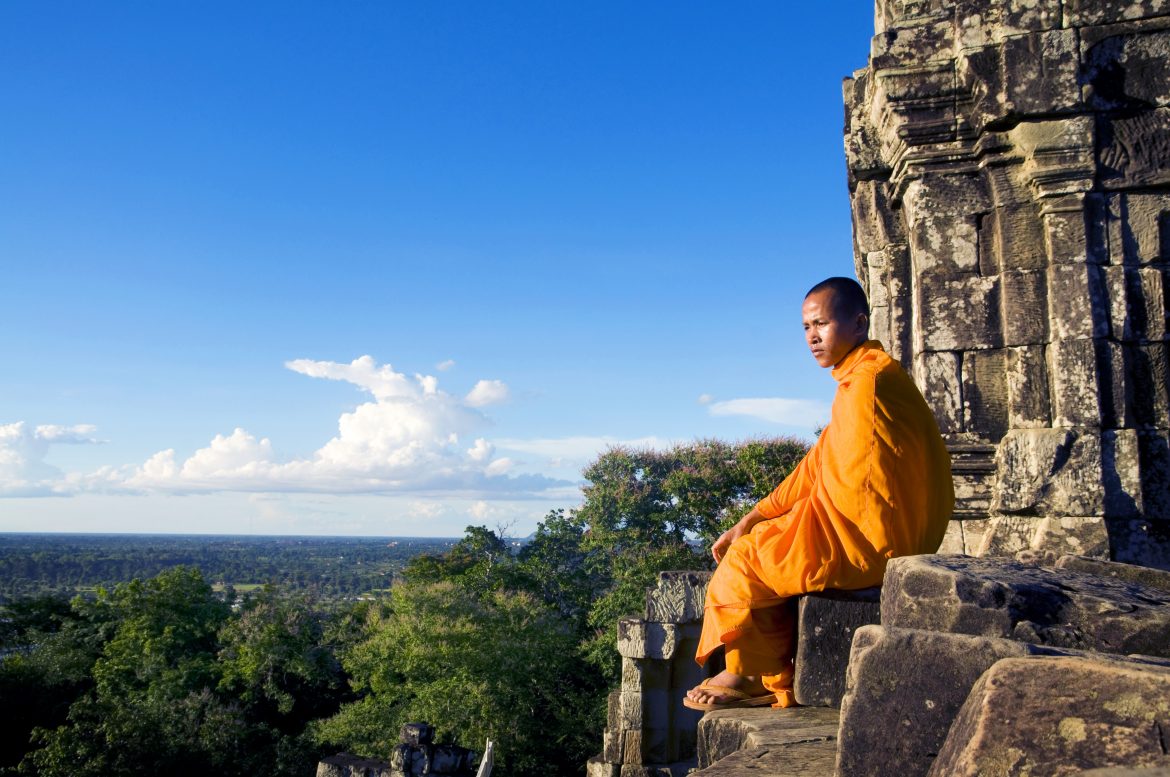From November 2021, the Cambodian government has allowed international tourists fully vaccinated to visit the country. In tourist cities like Siem Reap, most places are open, including Angkor Wat. It was originally built during the early 12th century, as the state temple complex. It is an architectural masterpiece of massive proportions, representing the apex of Khmer building skills. Moreover, there are many exciting reasons to visit there, some of the most highlight ones are below.
1. The World’s Largest Single Religious Monument
Angkor Wat presents the ruins of the imperial capital that ruled an empire for several centuries and was once the center of its power and influence across Mainland Southeast Asia. The total area of the Angkor Wat site measures almost 200 hectares, including the broad moat. It’s the world’s largest single religious monument.
Although time erased almost everything, the Angkor Wat temple remains. Moreover, we can imagine its past glory because of its vast scale and elaborate sculpted structures. It’s still so beautiful, after so many years.
Most of the remaining area was once occupied by the city, but no trace can be found of other old buildings. The reason is that they used lighter materials were to construct these buildings.

2. A Microcosm of the Hindu Universe
In general, Angkor Wat is spectacular for giving full expression to Hindu symbolism. It was originally dedicated to the Hindu god Vishnu, the protector of creation. The layout is based on a sacred design of the Hindu universe.
The five-towered temple standing in the middle of the complex represents Mount Meru, the center of the universe. The concentric galleries represent the mountain ranges surrounding Mount Meru, while the moat represents mythical oceans.
Strolling around, you may find you have been in an enchanting world of mystery.

3. An Architectural Masterpiece
As the greatest of all mountain temples, Angkor Wat is the prime example of classical Khmer architecture. It was designed for the immortal gods, so it was built of durable materials. Therefore, much has survived to this day.
The earliest temples were built using brick. By the 12th century, Khmer architects had become skilled in the use of sandstone, the most expensive material, only used for the most important temples. Most of the visible areas of Angkor Wat are made of sandstone blocks quarried from the Kulen Mountains.
If you like hiking, you’ll love exploring the complex. When you walk across the causeway from the west entrance, you reach a doorway that leads to the enclosure and frames a magnificent view. Climbing up to the central shrine is like climbing a real mountain. Such varied experiences ensure an enjoyable hike.

4. Immense Narrative Bas-Relief
The bas-relief at the temple is arguably the most famous creation in Khmer art. The carving skills reached their zenith during the Angkor Wat period. The carved area of the temple figures projects slightly from the background, approaching 600 meters in length and 2 meters in height.
Walking around the galleries, you will see intricately carved subjects from Hindu sources, mainly the epics of Ramayana and Mahabharata. Take in a culture that’s vastly different from your own, as you listen to interesting stories from the Hindu epics. Your knowledgeable guide will explain some of the special sights to you in more detail.

5. Nearly 2,000 Apsaras
Detailed carvings of nearly 2,000 sensual celestial maidens, known as apsaras, line the walls in alluring poses, from the pavilion to the tops of the high towers. They wear ornate jewelry and exquisite headgear with only a strip of cloth bound round the waist, showing bare breasts of milky whiteness.
Here you will have a chance to appreciate the beauty of women from the East. Take part in a game to find the only maiden among them all who reveals a full set of teeth.

6. A World Heritage Site
Angkor became a World Heritage Site in December 1992. Angkor Wat stretches over 77 sq miles (200 sq km). The metropolis of Angkor contains the magnificent remains of the incredible Khmer Empire, encompassing much of the Mekong region from the 9th to the 15th century. In the heart of Angkor lies the Angkor Wat.
Without a doubt, Angkor is a wonder of the world and a site of immense archaeological significance. Now it is undergoing restoration by teams from different countries, working under an International Coordinating Committee, presided over by the Japanese and French ambassadors.
Because of the rich cultural heritage of Angkor, the tourist industry in Siem Reap has developed rapidly in recent years and now caters to millions of tourists. Therefore, why not try it? Get start to Plan a Trip to Angkor Wat
7. An Unforgettable Sunrise
The silhouette of the central sanctuary reflects in the ponds, generated from the warm light of sunrise. That creates a wonderfully peaceful atmosphere.

Photograph the stunning skies or simply watch silently, sharing breath-taking sunrise moments with your loved one. The most popular spot for watching is from the west entrance, on either side of the lotus ponds.
The sunset is also fascinating. Therefore, you should climb to the summit of Phnom Bakheng, another temple nearby, and obtain spectacular views, particularly of Angkor Wat.
The post Top 7 Reasons to Visit Angkor Wat Once in Life first appeared on Luxury Travel's Blog.
The post Top 7 Reasons to Visit Angkor Wat Once in Life appeared first on Luxury Travel's Blog.
Không có nhận xét nào:
Đăng nhận xét